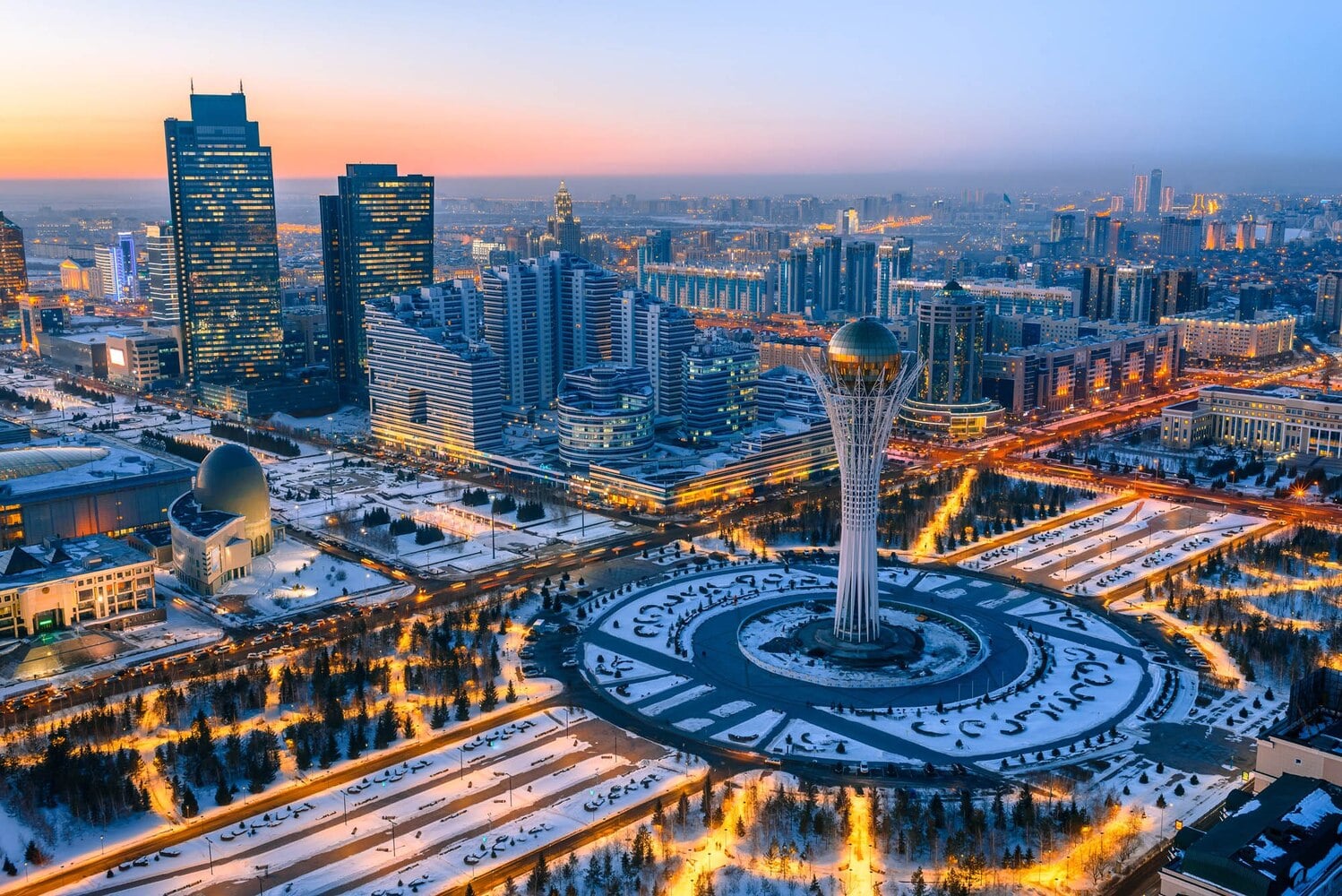Nur-Sultan, which has officially returned to its historical name Astana, is a powerful symbol of modern Kazakhstan. It is one of the youngest capitals in the world and has quickly become an architectural and political hub in Central Asia. The city combines futuristic design, large-scale cultural projects, and the open atmosphere of the Kazakh steppe. Astana impresses not only with its bold appearance but also with how swiftly it has developed while preserving national identity. Here are some fascinating and educational facts about Kazakhstan’s capital that you may not have known.
- The city has undergone several name changes. It was formerly known as Akmolinsk, Tselinograd, Akmola, then Astana, renamed Nur-Sultan in 2019, and officially reverted to Astana in 2022. It is one of the few cities in the modern world to have changed names so frequently.
- Astana officially became the capital of Kazakhstan on December 10, 1997. Previously, the capital was Almaty, but the government decided to relocate the administrative center to a more central location. This strategic move considered factors such as national development, security, and infrastructure planning.
- Located in the heart of Eurasia, Astana holds a favorable geographical position. It has become a key transport and logistics hub and plays an important role in international projects such as the Belt and Road Initiative. Its location boosts connectivity and economic integration.
- One of the city’s most iconic landmarks is the Bayterek Tower. It represents the tree of life and a Kazakh legend about the mythical bird Samruk that lays a golden egg at the top of the tree. Standing 105 meters tall, it offers panoramic views of the city from its observation deck.
- Astana’s architecture is known for its futuristic and daring designs. Renowned architects, including Norman Foster, have worked on the city’s development, designing landmarks like the Palace of Peace and Reconciliation and Khan Shatyr. The city is often compared to Dubai for its scale and ambition.
- Astana is one of the coldest capitals in the world. Winter temperatures can drop to -40 degrees Celsius, and strong winds make the cold feel even more severe. Despite the harsh climate, locals remain active and engaged in public life year-round.
- In 2017, Astana hosted the international exhibition EXPO-2017 under the theme “Future Energy.” The event spurred rapid infrastructure growth and the construction of new facilities. Its symbol became the spherical building Nur Alem, which has an 80-meter diameter.
- The city is home to Nazarbayev University, one of Kazakhstan’s leading academic and research institutions. The university has an international profile and cooperates with top global universities. It trains the country’s future leaders and high-level specialists.
- The Hazret Sultan Mosque is one of the largest in Central Asia. It can accommodate more than 10,000 worshippers and blends Islamic architectural traditions with modern design. It is located near key government buildings and has become a major religious and cultural site.
- Astana serves as Kazakhstan’s cultural center. It hosts institutions such as the Astana Opera, the National Museum of Kazakhstan, the Philharmonic Hall, and numerous exhibition spaces. The city is also a venue for international festivals, forums, and sports events.
- The city is implementing a smart city concept that includes digital infrastructure, e-government systems, and urban safety monitoring. These technologies aim to improve residents’ quality of life and make municipal services more efficient.
- The Atameken Park is a unique open-air museum that features a miniature map of Kazakhstan. It displays scaled-down versions of the country’s major landmarks and natural features. It is a favorite destination for both locals and tourists.
- Astana is a multicultural city home to over 100 ethnic groups. Numerous cultural centers representing different communities contribute to an atmosphere of harmony and mutual respect. This diversity fosters tolerance and interethnic dialogue.
- The city is divided by the Ishim River into the right and left banks. The left bank is the modern administrative and business district, while the right bank represents the historical core with residential neighborhoods and parks. This contrast highlights the city’s balance between tradition and innovation.
- Astana hosts the annual Astana Economic Forum, which brings together leading economists, policymakers, and business leaders from around the world. The forum serves as a platform to discuss global challenges, investment opportunities, and sustainable development strategies.
Astana is not just the administrative capital but a symbol of innovation, progress, and cultural richness in Kazakhstan. These interesting facts show how quickly the city has transformed into a vibrant, forward-looking metropolis. You may not have known that Astana stands as a unique example of how tradition and modernity can coexist. It is a city that continues to grow, inspire, and amaze.





